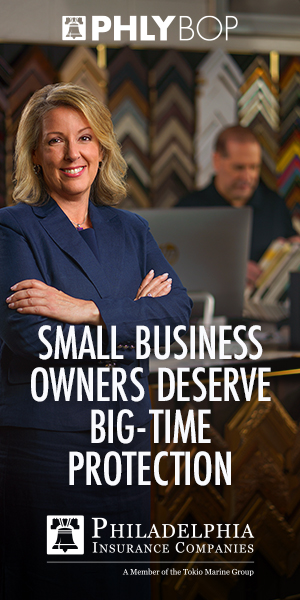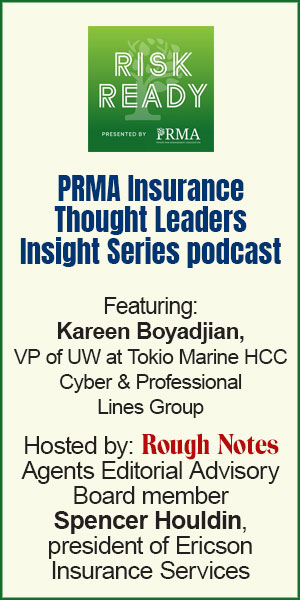
Strategies for connecting with
people who already want to hear from you
Even if you’re the best producer in the world, cold calling
puts you at a disadvantage. You’re starting the conversation as an outsider.
By Carolyn Smith, APR, TRA
Let’s get one thing straight: The idea that prospecting is dead is a lie. The phone isn’t obsolete, and saying goodbye to traditional cold calling doesn’t mean you can avoid prospecting altogether. But if you’re still relying on cold calling, you’re wasting your time—and probably your sanity.
Here’s the reality: Cold calling has never been fun and, starting in 2025, it’s about to get a lot harder, thanks to new FCC regulations. These rules require explicit, one-to-one consent before you can make a sales call. That’s right. Broadly gathered lead lists? They’re done. Ambiguous consent? Forget it. And let’s not even get started on the increased enforcement and fines. Cold calling is officially on life support.
So, here’s the good news: You didn’t need cold calling in the past, and you don’t need it now to build your pipeline. What you need is a smarter approach—one that focuses on relationships, value, and targeted outreach. Let’s dive into why cold calling is outdated, what you can do instead, and how you can build a prospecting strategy that’s not just effective but also sustainable.
The problem with cold calling
Why do so many producers fail when they rely on cold calling? It’s simple: Rejection is the default. During a Trusted Risk AdvisorTM program, one producer put it, “It’s difficult to begin a conversation with a prospect through cold outreach because the almost immediate response is that they already have an agent to do business with.”
As Andy Neary, CEO of Complete Game Consulting, says, “Think about it—a core pillar of traditional (and outdated) insurance marketing has been sharing your message one prospect at a time through cold calls and emails. It’s pretty easy to see why it’s not effective. You’re trying to tell everyone how great you are, and doing it by calling them when they have no clue who you are.”
Think about it: No one wants to be interrupted by someone they don’t know, pitching something they don’t care about. And when the rejection piles up, new producers get frustrated, lose confidence, and quit. It’s a recipe for failure.
Even if you’re the best producer in the world, cold calling puts you at a disadvantage. You’re starting the conversation as an outsider. The prospect isn’t primed to listen to you, let alone buy from you. And in today’s world, where trust is in short supply, that’s a hurdle you don’t need.
Prospecting without cold calling: The smarter way
If cold calling is out, what’s in? Relationships and community building. Instead of interrupting strangers, focus on connecting with people who already want to hear from you. Here are some key strategies:
- Leverage LinkedIn the right way. Linked-In isn’t just a social network; it’s a goldmine for prospecting. But let me be clear: Spamming people with your pitch is not how you win on LinkedIn. The real power of LinkedIn lies in building genuine connections and forming a community that is open to your message.
Here’s how you do it:
- Clearly identify your ideal prospect.
- Use LinkedIn’s search features to find prospects, but instead of pitching immediately, start by engaging with their content or sending a thoughtful, personalized message.
- Build your marketing message and engagement strategies around their story and unique needs, not yours.
- Engage with your target audience by commenting on their posts and sharing valuable content that is relevant to them.
- Embrace content marketing. Content marketing is your ticket to attracting prospects organically. When you create valuable, relevant content, you position yourself as an expert in your field. Whether it’s blog posts; videos on YouTube, LinkedIn, or in your emails; or social media updates, your content should solve problems, answer questions that are relevant to your audience, and showcase your expertise in areas that concern them.
Pro tip: Focus on evergreen topics that will continue to drive traffic and leads over time. And don’t forget to include a clear call to action, like signing up for your newsletter or booking a consultation.
- Nurture leads with email marketing. Email isn’t dead—far from it. In fact, email marketing is one of the most effective ways to nurture leads. The key is to make your emails targeted and relevant for your warm leads. Use segmentation to send the right message to the right people at the right time.
For example, if someone downloads a guide from your website or LinkedIn post or responds to your LinkedIn posts, follow up with a series of emails that expand on the topic and show them how you can help. The goal is to build trust and keep your brand top of mind until they’re ready to buy.
- Focus on high-value prospects and relationship building. Stop making the mistake of casting a wide net, hoping something sticks. Instead, focus on high-value prospects, delivering tailored, relevant messaging that hits their pain points. Then, begin building trust and rapport.
Or as motivational speaker Zig Ziglar once said, “Stop selling. Start helping.” You’re not just another transactional salesperson; you’re their trusted advisor.
The result? You’re not chasing clients—they’re coming to you because you’ve already proven you get them. It’s the perfect way to fill your pipeline with qualified leads who actually want to work with you.
- Elevate your prospects’ perception of you. Think about it—do accountants or attorneys spend their days cold calling strangers? Of course not, because they position themselves as trusted advisors, and if you want to elevate yourself from just another producer to a sought-after risk advisor, it’s time to do the same.

The art of communication
Here’s a game-changing question: How many opportunities did you have last week to start a conversation with someone about what you do? Not how many appointments you had—how many opportunities to simply start a conversation?
The truth is, opportunities to connect are everywhere. But most producers miss them because they don’t know how to communicate effectively.
The secret? Start with what you believe. Share why you believe it. Show how your belief benefits others. Then ask, “Do you believe as I do?” When you hear a yes, you’ve just opened the door to a meaningful conversation.
Pipeline development plan
To succeed without cold calling, you need a solid foundation.
Lester Morales, founder and CEO of Next Impact, emphasizes the importance of creating a pipeline development plan that includes:
Goal setting. Establish both activity-based and revenue-based goals. Define what success looks like and break it into actionable steps.
Pipeline management. Create a process and reporting structure that allows for accurate forecasting. This helps you focus on the most promising opportunities.
Know your numbers. Track your 3 Cs—Coverage, Conversion, and Close ratios. These metrics provide the insight needed for consistent improvement. That means tracking the right metrics:
Coverage ratio. How many prospects are in your pipeline?
Conversion ratio. How many prospects become warm, qualified leads?
Close ratio. How many warm, qualified leads become clients?
These metrics give you a clear picture of where you’re succeeding and where you need to improve. And when you combine them with prospecting for “warm” leads, aka people who want to hear from you, you’re setting yourself up for long-term success.
Why connections outperform transactions
Andy Neary emphasizes the importance of moving beyond transactional interactions. He says, “In 2025, it’s time to stop being transactional and cold calling. The future is in building real connections and nurturing warm leads. Network in your community, build relationships through social media, and create a space where people want to engage with you.”
Neary’s approach highlights a critical shift in strategy. By focusing on relationships instead of quotes, you can establish trust and credibility. When you show genuine interest in your prospects’ needs and take the time to engage authentically, you’re creating lasting partnerships. And in an era where trust is everything, those partnerships are what drive sustainable growth.
Why this matters now
The new FCC regulations are a wake-up call. Businesses can no longer rely on outdated tactics like cold calling. Instead, invest your energy in strategies that maximize your opportunity and set the stage for success. The days of interrupting strangers are over.
Just keep in mind, success is paid for in advance. The future belongs to those who adapt, innovate, and focus on building trust. The effort you put into building relationships today will pay off tomorrow—and for years to come.
So, what’s it going to be? Will you cling to outdated methods and hope for the best? Or will you step up, embrace change, and build a consultative prospecting strategy that works in 2025 and beyond?
The choice is yours. But remember: The number one reason producers fail is because of an empty pipeline. And the number one reason for an empty pipeline? A failure to prospect the right way. So, get out there, start building relationships, and watch your business grow.
The author
Carolyn Smith, APR, TRA, chief training officer for Beyond Insurance, creates and delivers transformative programs, including the Trusted Risk Advisor certification, BIGN Producer Boot Camp, and Quest for Success, that have positively impacted the lives and careers of countless professionals. These programs help industry professionals build a career that they love and achieve the success they deserve.




